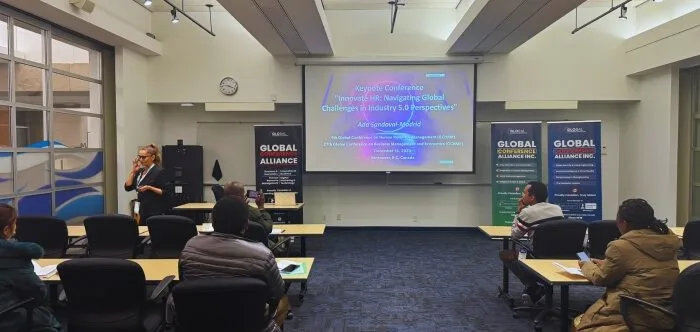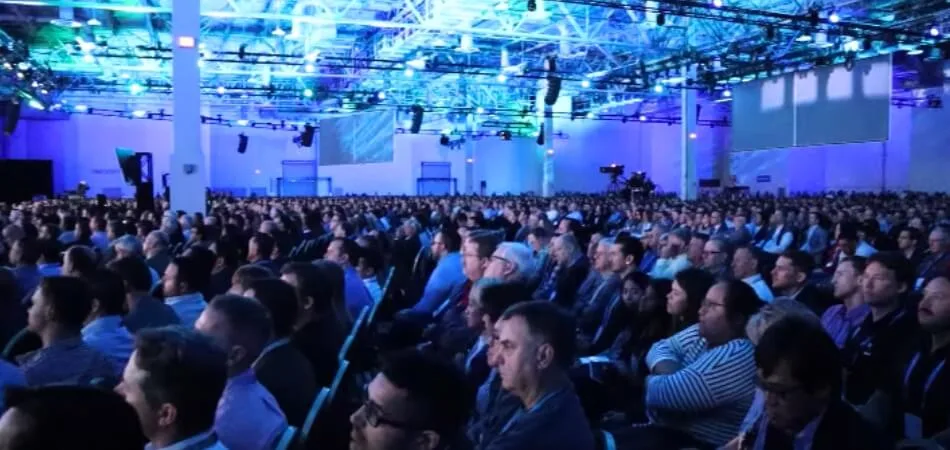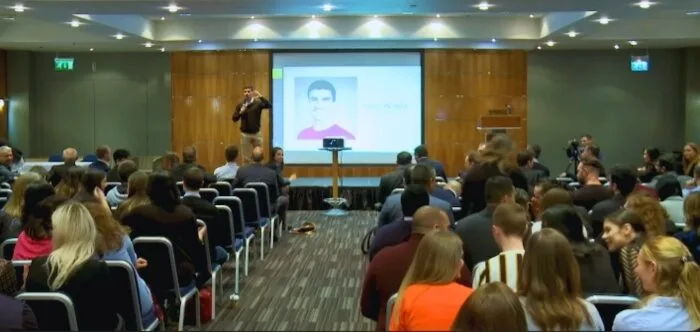Networking doesn’t end when the conference lights dim; it’s just getting started. Mastering the art of post-conference engagement is crucial in turning brief encounters into lasting professional relationships. But, how do you engage with people after a conference?
The key lies in personalized follow-ups through emails, utilizing platforms like LinkedIn for continued interaction, sharing insightful resources, and initiating collaborative ventures.
Additionally, arranging face-to-face meet-ups or calls can significantly deepen these newfound connections. Curious about transforming fleeting handshakes into fruitful partnerships? Join us as we explore these tactics in detail in the following sections of our article.
What the Conference is About?
The conference, an annual gathering of industry experts and enthusiasts, centers around the latest innovations in technology and digital transformation. It’s a melting pot of ideas, where thought leaders share insights on emerging trends and groundbreaking developments. Attendees gain not only knowledge but also invaluable networking opportunities with peers and pioneers.

This year’s theme focuses on sustainable technology and its role in shaping a greener future. Speakers from diverse backgrounds, including environmental scientists and tech giants, discuss the intersection of technology and ecological responsibility. The agenda promises engaging debates on how digital advancements can drive sustainable practices across various sectors.
Interactive workshops and panel discussions form the core of this event, providing a hands-on experience in cutting-edge tech applications. These sessions are designed to foster collaborative learning and spark innovative ideas among participants. It’s an ideal platform for professionals and hobbyists alike to explore, learn, and connect.
Significance of Conferences in Various Fields
Conferences play a pivotal role in the progression of various fields, serving as hubs for knowledge exchange and networking. They bring together experts, practitioners, and enthusiasts, fostering a collaborative environment for growth and innovation. Here’s how they significantly impact different domains:
- In academia, conferences are vital for scholars to present research findings and receive feedback from peers. They offer a platform to discuss theories, methodologies, and foster academic collaborations.
- In the tech industry, conferences showcase the latest innovations, trends, and future directions. They are key for professionals to stay updated and engage with emerging technologies.
- In healthcare, medical conferences spread new research, treatments, and best practices. They are essential for medical professionals to advance their knowledge and skills.
- For businesses, industry-specific conferences provide insights into market trends and competitor strategies. They are crucial for networking and discovering new business opportunities.
- In the arts, these gatherings celebrate creativity, showcase new works, and discuss industry challenges. They are important for artists to gain exposure and inspiration.
- In environmental sectors, conferences focus on sustainability challenges and innovative solutions. They play a key role in global collaboration for environmental conservation.
Conferences act as catalysts for advancement and collaboration across various sectors. They bridge gaps, ignite new ideas, and pave the way for future developments in respective fields.
Types of Conferences You Can Explore
Exploring the world of conferences reveals a range of opportunities for learning, networking, and innovation. Whether you’re a scholar, business professional, or tech enthusiast, there’s a conference tailored to your interests and industry. These gatherings are not just events, but gateways to new horizons and collaborations.
Academic Conferences
Academic conferences focus on scholarly research and academic discussions. Here, researchers and scholars present papers, receive feedback, and engage in intellectual discourse. These events are crucial for academic networking and staying abreast of recent developments in various fields. They often publish proceedings, contributing to the body of academic literature.
Business Summits
Business summits cater to industry professionals looking to expand their networks and knowledge. They feature expert speakers, panel discussions, and workshops on market trends and business strategies. These summits provide a platform for entrepreneurs and executives to forge new partnerships and collaborations. Attendees gain insights into best practices and emerging business technologies.
Technology Expos
Technology expos showcase the latest innovations in the tech world. These events are a haven for tech enthusiasts, developers, and entrepreneurs. They provide a glimpse into future technologies and current industry trends. Attendees can experience hands-on demos and connect with leading tech companies.
Medical Conferences
Medical conferences are vital for healthcare professionals to discuss new research and treatments. They play a key role in continuing medical education and professional development. These events often include workshops, poster sessions, and keynote speeches by renowned medical experts. They are crucial for staying updated with the latest advancements in medicine.
Creative Arts Festivals
Creative arts festivals celebrate artistic expression in various forms like music, literature, and visual arts. They provide a platform for artists to showcase their work and engage with audiences. These festivals often include performances, exhibitions, and interactive sessions. They are a melting pot of creativity and inspiration for both artists and art enthusiasts.
Environmental Symposia
Environmental symposia focus on sustainability and ecological issues. They bring together scientists, activists, and policymakers to discuss environmental challenges and solutions. These events are instrumental in fostering global collaboration for environmental conservation. They also raise awareness about sustainable practices and climate change impacts.
Exploring different types of conferences can enrich your knowledge and expand your professional network. Each type offers a unique experience, tailored to specific interests and industries. Delving into these diverse gatherings can be both enlightening and inspiring, opening up new avenues for growth and collaboration.
How Do You Engage With People After a Conference?
Attending a conference is just the first step in making new professional relationships. The real magic happens in the follow-up, where connections are nurtured and opportunities are explored. Here’s a step-by-step guide on how do you engage with people after a conference:
Step 1: Organize Your Contacts
Start by organizing the contacts you’ve made at the conference. Categorize them based on shared interests, potential for future collaborations, or relevance to your industry. This step is crucial for tailoring your follow-up strategy to each contact, making your communication more effective and personal.
Step 2: Send Personalized Emails
Send personalized emails to your new contacts within a few days after the conference. Reference specific conversations or topics discussed to jog their memory. This personal touch not only reinforces your connection but also shows your attentiveness and interest in the conversation.
Step 3: Connect on LinkedIn
Use LinkedIn for more formal and continuous professional engagement. When sending connection requests, include a personalized message that recalls your meeting. LinkedIn allows for ongoing interaction through sharing industry news, achievements, and insights, keeping your connection active and informed.
Step 4: Share Relevant Resources
Enhance the connection by sharing articles, research papers, or resources that you believe would interest them. This step demonstrates that you are thinking about their interests and are keen to add value to the relationship. It can also serve as a conversation starter for future discussions.
Step 5: Propose Collaboration Opportunities
Identify potential areas for collaboration, such as joint research, shared projects, or event participation, and propose these ideas. Collaborations can deepen professional ties and lead to mutually beneficial outcomes. Be clear about how the collaboration can benefit both parties.
Step 6: Plan Meet-ups or Calls
Organize meet-ups, whether virtual or in-person, to discuss shared interests or potential projects. If geographical distance is a barrier, scheduling a phone or video call can be equally effective. These direct interactions help in building a rapport beyond the conference setting.
Step 7: Follow-Up Regularly
Maintain the relationship with regular check-ins. These don’t always have to be work-related; even casual conversations or greetings on special occasions can keep the connection warm. Regular follow-ups demonstrate sustained interest and help in keeping the relationship dynamic and engaged.
Engaging effectively with people after a conference is about consistent, thoughtful, and mutually beneficial interactions. By following these steps, you transform brief conference encounters into enduring professional relationships and collaborations.
Post-Conference Engagement – How Does it Benefit You?
Taking part in a conference is more than just an event; it’s an opportunity for growth and development. The real value often lies in what happens after – the art of post-conference engagement. Effective engagement can open doors to numerous benefits, enhancing both personal and professional trajectories.
Expand Professional Network
Post-conference engagement significantly expands your professional network. It transforms brief introductions into meaningful connections, enriching your pool of contacts. These connections can offer diverse perspectives and insights, vital for professional development. Networking post-conference can lead to future collaboration opportunities.
Access to New Opportunities
Engaging with fellow attendees can lead to unexpected opportunities. From job offers to collaborative projects, these connections can open new doors. Regular communication keeps you at the forefront of their minds, increasing your chances of recommendations. This networking aspect is a significant career booster.
Enhances Knowledge and Skills
Continued dialogue with experts and peers post-conference enhances your knowledge. Sharing resources and insights contributes to continuous learning. This ongoing exchange of information keeps you updated on industry trends and best practices. It’s a practical way to extend the learning experience beyond the conference.
Boosts Visibility and Reputation
Staying active in post-conference networks boosts your professional visibility. Regular contributions to discussions and collaborations establish you as a knowledgeable and active member of your community. This enhanced visibility can build your reputation in your field. It’s a step towards becoming an industry thought leader.
Fosters Personal Growth
This engagement isn’t just professionally rewarding; it also fosters personal growth. Interacting with diverse individuals broadens your perspectives and enhances your interpersonal skills. It builds confidence and improves your ability to communicate effectively in professional settings. Such growth is invaluable in any career path.
Cultivates Long-Term Relationships
Effective post-conference networking cultivates long-term professional relationships. These relationships can evolve into mentorships, partnerships, or lifelong friendships. Such connections provide support, advice, and encouragement throughout your career. They are a vital part of a successful professional life.
Engaging effectively after a conference is a stepping stone to a world of opportunities. It’s about building a network that supports your career, enriching your knowledge, and opening doors to new possibilities. The effort put into post-conference engagement can be a significant catalyst for both personal and professional growth.
Strategies to Avoid Common Mistakes While Engaging With People After a Conference
Post-conference engagement is a delicate balance between being proactive and respectful. It’s easy to falter, either by being too aggressive or too passive. Here are some strategies to avoid common mistakes while engaging with people after a conference.
- Avoid Generic Messages: Tailor your follow-up messages to reflect specific conversations you had. Generic messages can seem impersonal and are less likely to elicit a response.
- Don’t Delay Follow-Ups: Reach out within a few days post-conference. Waiting too long might make your new contacts forget your interaction.
- Respect Boundaries: Don’t be overly persistent if someone doesn’t respond immediately. People are often busy; respect their time and space.
- Be Clear and Concise: Keep your communication clear and to the point. Long-winded messages can be overwhelming and are often not fully read.
- Avoid Selling Immediately: Don’t start with a sales pitch in your first interaction post-conference. Build a relationship first before pitching your services or products.
- Share Valuable Insights: Offer something of value in your follow-up, like a relevant article or a helpful connection. This approach shows that you’re interested in a mutually beneficial relationship.
- Maintain Professionalism: Always keep the tone of your communication professional. Casual or overly familiar language can sometimes be off-putting.
Managing post-conference networking requires tact and mindfulness. By following these strategies, you can build meaningful, lasting professional relationships while avoiding common pitfalls. Remember, the goal is to create a positive, lasting impression that paves the way for future interactions.
Bottom Line
Effective post-conference engagement is a key strategy for enhancing professional networks and uncovering new opportunities. It transforms brief meetings into valuable connections that can lead to collaborative ventures and career advancements.
Central to this process is the question, how do you engage with people after a conference? The answer lies in personalized communication, utilizing platforms like LinkedIn, and sharing resources that resonate with your new contacts. These steps are essential for deepening relationships and staying relevant in your industry.
Avoiding common pitfalls such as generic messaging or delayed responses is crucial for maintaining these new connections. With a mindful and strategic approach, post-conference engagement can pave the way for lasting professional relationships and continuous personal growth.







